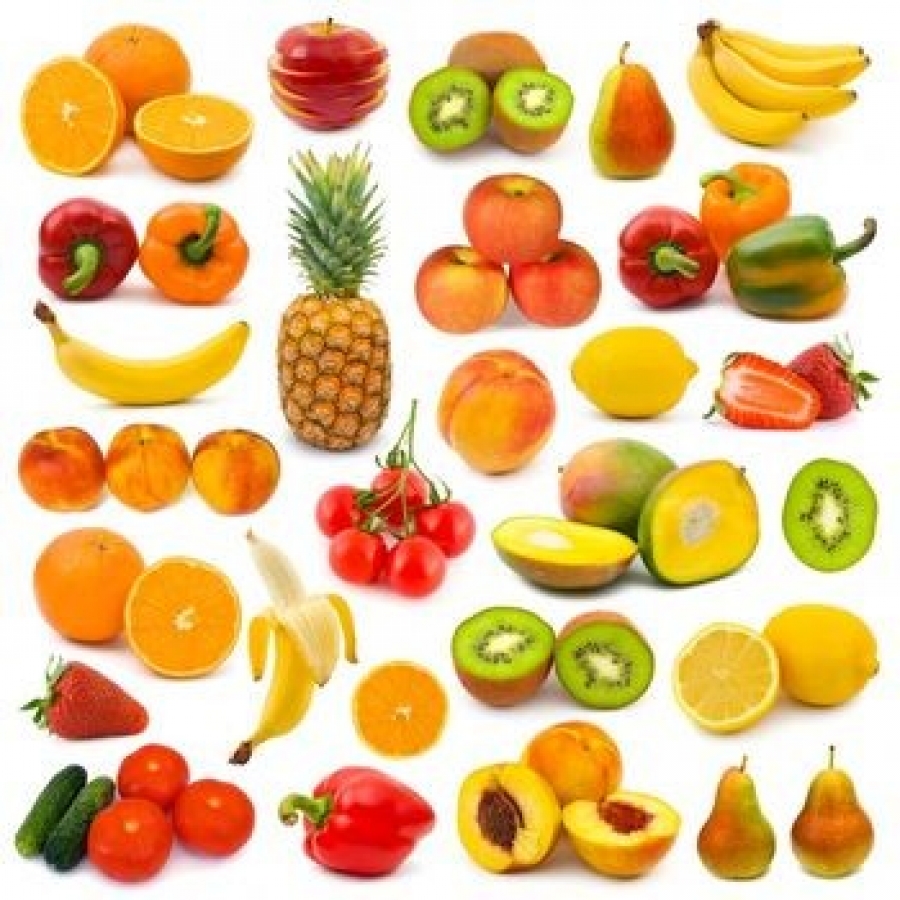
ARTHRITIS FOOD MYTHS
Get the truth about foods commonly touted to relieve arthritis pain and inflammation.
Adapted from Arthritis Today Online
Here are some foods that are commonly touted on the Internet, in books and elsewhere as capable of mitigating or exacerbating arthritis symptoms – and the truth behind the hype.
The myth: A dozen gin-soaked raisins a day provide natural pain relief.
THE SCIENCE: Raisins are often treated with sulfur dioxide gas during processing to preserve their color – and sulfur has been explored for its role in joint health. Some 25 years ago, Russian researchers reported that a sulfur-containing compound called dimethyl sulfoxide helped lessen destructive joint changes in mice. Other research has explored whether a sulfur compound called methylsulfonylmethane helped with osteoarthritis (OA) pain.
The results were inconclusive at best, but such studies feed the belief (though never the proof) that sulfur in raisins has antiinflammatory effects.
As for gin, juniper berries, which are used to make it, were prescribed in the Middle Ages for their own purported, but never proven, anti-inflammatory properties.
THE BOTTOM LINE: No scientific study has ever shown that gin-soaked raisins reduce arthritis pain or inflammation.
The myth: Drinking cider vinegar eases pain.
THE SCIENCE: Some “natural health” advocates contend that beta-carotene in apple cider vinegar destroys free radicals in the body that are involved in ravaging the immune system. But the amount of beta-carotene in apple cider vinegar is infinitesimal, and if that approach worked, anyone who ate carrots would be free of arthritis pain. Others say joints become stiff when acid crystals harden in them and that the vinegar dissolves the crystals and flushes them from the body. Gout is the only form of arthritis that involves acid crystals (uric acid crystals, formed from an excess of uric acid in the body) – and cider vinegar certainly doesn’t relieve gout pain. Even if cider vinegar could break up acid crystals, “You can’t direct acid from your mouth to whatever part of the body you want,” explains Irwin Rosenberg, MD, a gastroenterologist and professor of nutrition at Tufts University in Boston.
THE BOTTOM LINE: Apple cider vinegar belongs in your kitchen, not your medicine chest.
The myth: Dairy products make arthritis worse.
THE SCIENCE: A number of years ago, Dr. Panush conducted a study in which he put people with RA on dairy-free diets or on placebo diets. The vast majority of those on the special diet fared no better than those on placebo regimens, according to the findings, published in 1983 in Arthritis & Rheumatism. In fact, dairy foods appear to protect against gout. Researchers at New Zealand’s University of Auckland found that milk consumption led to a 10 percent decrease in serum urate concentrations, potentially reducing the risk for gout development, according to a study in the Annals of Rheumatic Diseases.
THE BOTTOM LINE: In a very few people, limiting dairy products may help ratchet down arthritis symptoms – but it could simply be because they have a degree of lactose intolerance. Dairy products are safe for most people with arthritis to enjoy.
The myth: Nightshade vegetables aggravate arthritis.
THE SCIENCE: Tomatoes, potatoes, eggplants and peppers are among the many plants that fall in the nightshade category. All
contain a chemical called solanine, which has been branded a culprit in arthritis pain, but no formal research has ever confirmed the claim. In fact, the latest credible research suggests that nightshade vegetables might actually help reduce arthritis symptoms. Earlier this year, a study in the Journal of Nutrition showed that both yellow and purple potatoes reduced blood markers for inflammation in healthy men. Other research, including the Johnston County Osteoarthritis Project in North Carolina, published in the journal Public Health Nutrition, found that people with the highest serum levels of an antioxidant in tomatoes called lutein were 70 percent less likely to have OA.
THE BOTTOM LINE: People with arthritis may actually benefit from nightshades.
The myth: A low-acid diet lessens arthritis pain.
THE SCIENCE: No formal research has been done on this because what you eat won’t really affect the blood’s optimal pH of 7.4,says Dr. Rosenberg. Any food, whether low or high in acid, is bathed in hydrochloric acid when it reaches the stomach. Other compounds then act on the food particles to reach the proper pH before nutrients are absorbed by the bloodstream. It happens automatically; you don’t have to aid the process with your food choices.
THE BOTTOM LINE: Just like drinking acidic vinegar won’t ratchet down stiffness and pain, neither will avoiding acidic foods.
The myth:A raw food diet relieves symptoms.
THE SCIENCE: In the late 1990s, Finnish scientists reporting in the British Journal of Rheumatology put a group of people with RA on either a traditional diet or a raw vegan diet supplemented with beverages rich inlactobacilli – bacteria considered good fo the gut and possibly the immune system. Those on the raw diet reported more relief of symptoms. Furthermore, when they returned to a diet that included cooked foods, including meat, their symptoms were aggravated. But the positive effects of raw food were not discernible in what the researchers called objective measures of disease activity, including duration of morning stiffness, pain at rest and pain on movement. And half of the raw food eaters experienced adverse effects like nausea and diarrhea during the diet and stopped the experiment prematurely.
THE BOTTOM LINE: Eating plenty of uncooked fruits and vegetables is a good idea, as long as you ramp up slowly so the extra fiber won’t cause stomach discomfort. But it’s not clear that such a dietary change itself will bring arthritis relief, especially since the diet here was supplemented with a specially made beverage containing specific bacteria.
The myth: When it comes to red wine, more is better.
THE SCIENCE: “There are really interesting data on a compound in red wine – resveratrol – that show anti-inflammatory effects,” says Sharon Kolasinski, MD, director of the rheumatology fellowship program at the University of Pennsylvania School of Medicine in Philadelphia.
Research published last year in the Journal of Clinical Endocrinology and Metabolism showed that in subjects taking supplements
containing resveratrol, the action of pro-inflammatory cytokines in the body was suppressed. However, the study included only
20 participants, lasted only six weeks and did not involve wine.
Although moderate amounts of wine may bring about health benefits, from protecting the heart to reducing food-borne illnesses,
excessive drinking appears to increase the production of pro-inflammatory cytokines, according to University of North Carolina at
Chapel Hill researchers.
THE BOTTOM LINE: Keep it in moderation – no more than two drinks per day for women; not more than three drinks per day for
men. “It would be taking it a little far to recommend more and more red wine on the basis of that preliminary research”
suggesting a benefit, Dr. Kolasinski says. In addition, a number of arthritis medications may negatively interact with alcohol; always be sure to let your doctor know how much you drink.
The myth:Coffee causes gout.
THE SCIENCE: Research published recently in the American Journal of Clinical Nutrition supplies evidence to the contrary. In
looking at the coffee-drinking habits of tens of thousands of women participating in the Nurses’ Health Study, Boston University
School of Medicine researchers discovered a decreased risk for gout in association with day-to-day coffee drinking. The
association corroborates a 2007 finding in men, published in Arthritis & Rheumatism, that long-term coffee intake was associated
with a lower incidence of gout.
THE BOTTOM LINE: Too much coffee will make you jittery and keep you up at night, but it does not cause gout, and may actually
lower your risk of gout.
The myth: Consuming gelatin strengthens joints.
THE SCIENCE: Gelatin, a protein made from animal products, contains collagen, one of the materials that make up joint cartilage.
Thus, the rumor goes, if you consume gelatin, you strengthen your joints by adding collagen to them. A 1990s study from Ball State University in Muncie, Ind., appeared to offer proof by showing that athletes who took gelatin supplements had reduced knee joint pain compared to those taking placebo. But the research was conducted by a consultant for Nabisco, which makes Knox gelatin, and was not published in a scientific journal, which meant it never underwent rigorous review.
THE BOTTOM LINE: Gelatin doesn’t travel intact to a particular part of the body. When digested, its components – such as amino
acids – are needed for all kinds of tissues, enzymes and various biological processes.
The myth: Citrus fruits cause inflammation.
THE SCIENCE: Websites abound warning people with arthritis away from citrus fruits because they supposedly promote
inflammation. On the contrary, citrus is rich in vitamin C, and the Framingham Heart Study in Massachusetts showed that the progression of OA in participants was reduced by more than half in people who consumed at least 152 milligrams of vitamin C a day on average. In people who had OA but experienced no pain, vitamin C in the diet appeared to protect against future knee
pain.
THE BOTTOM LINE: Don’t shy away from citrus fruits. The vitamin C they contain might not only protect against OA pain, but it also is critical in the formation of both collagen and proteoglycans – the major components of cartilage. In addition, vitamin C, an antioxidant, can quench free radicals, which are capable of damaging cartilage, causing inflammation and pain.
The myth: Fasting relieves RA pain.
THE SCIENCE:North America found improvement of arthritis symptoms with fasting. But too much fasting undermines the immune system, says David S. Pisetsky, MD, PhD, a professor of medicine at Duke University Medical Center in Durham, N.C. And no researchshows persistence in the improvement of symptoms for greater than 10 days, which is not surprising because fasting is not sustainable.
THE BOTTOM LINE: When it comes to food, a better way to get relief from RA symptoms is to lose excess weight with a healthy
diet.



